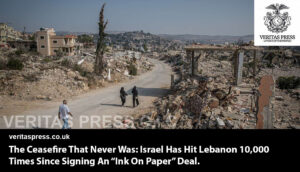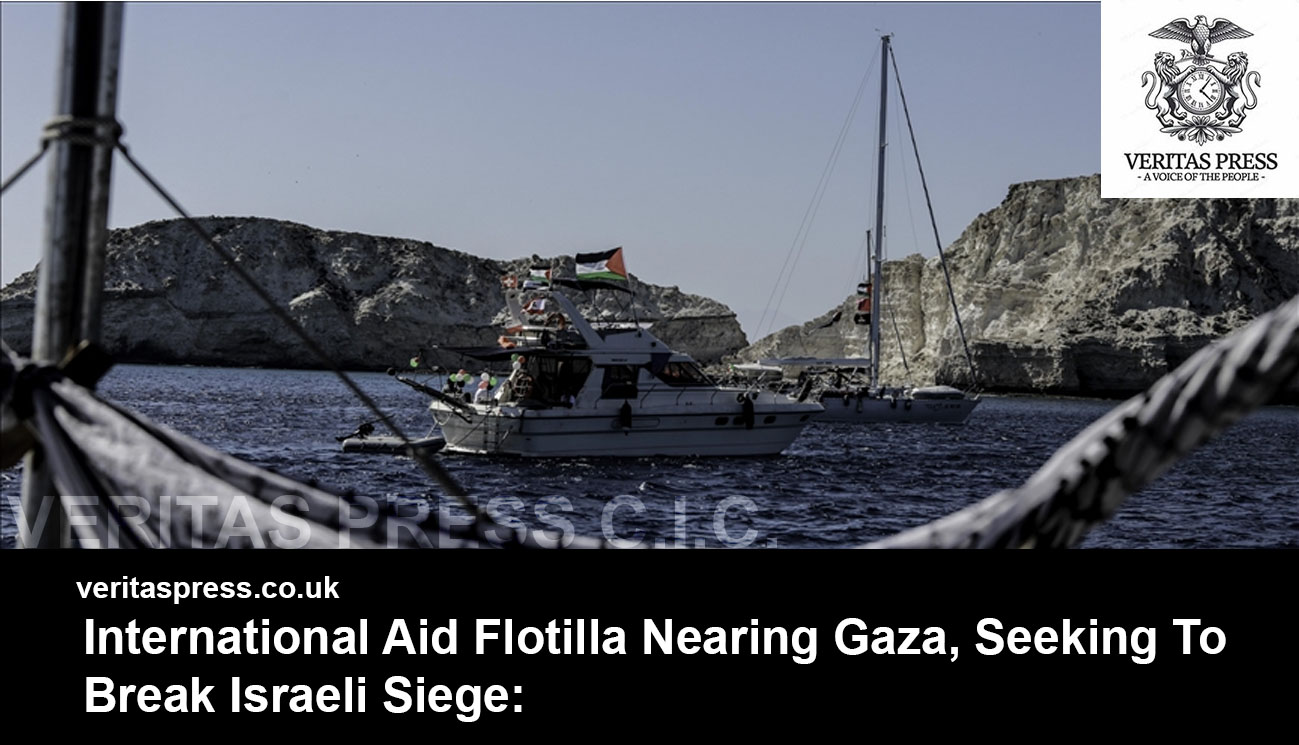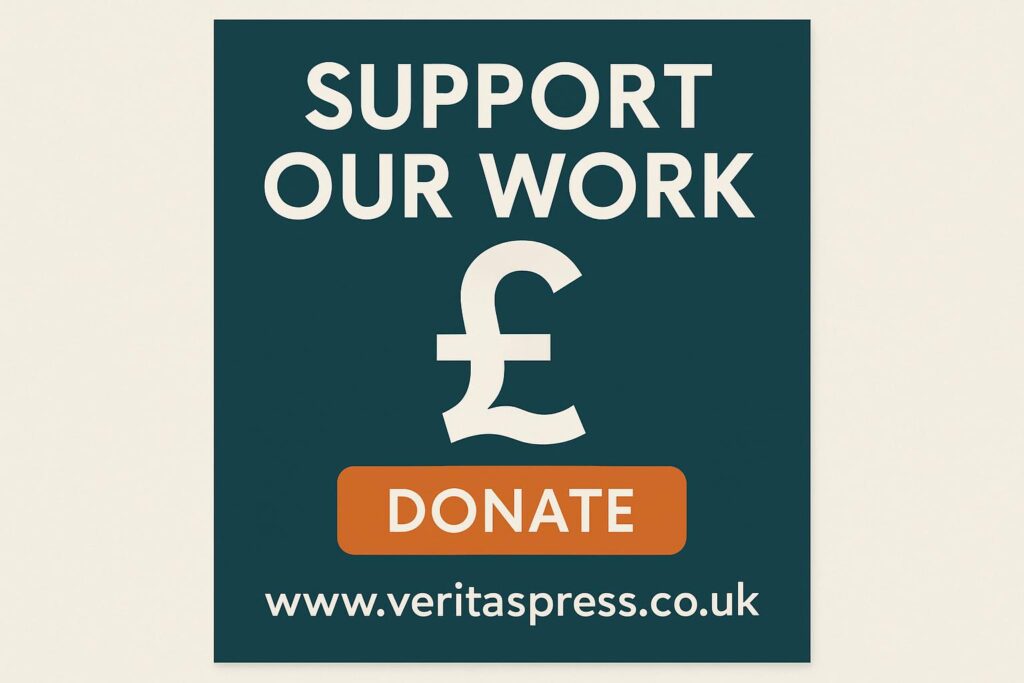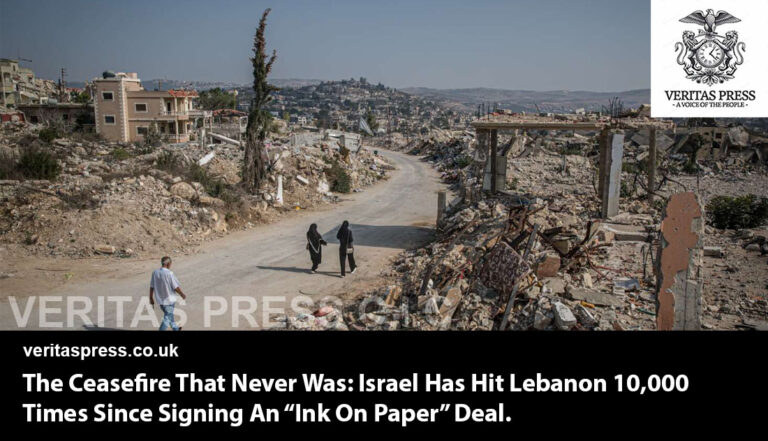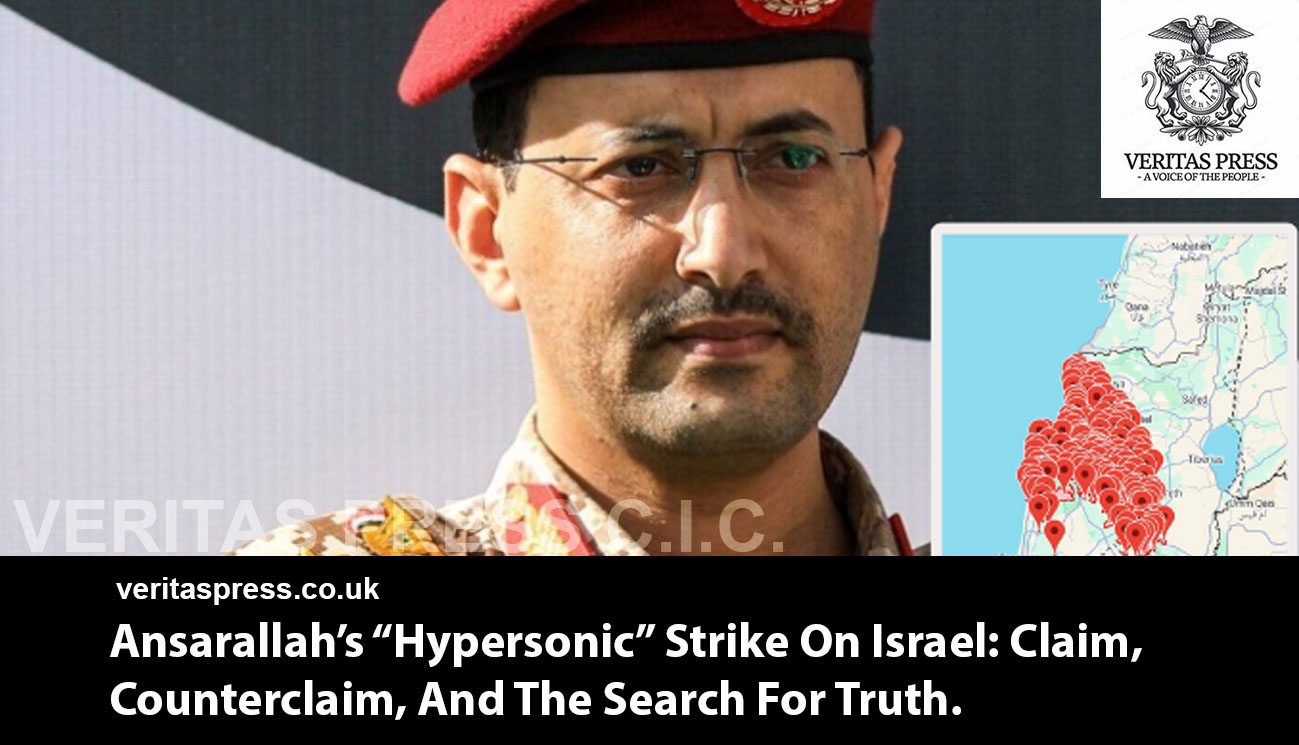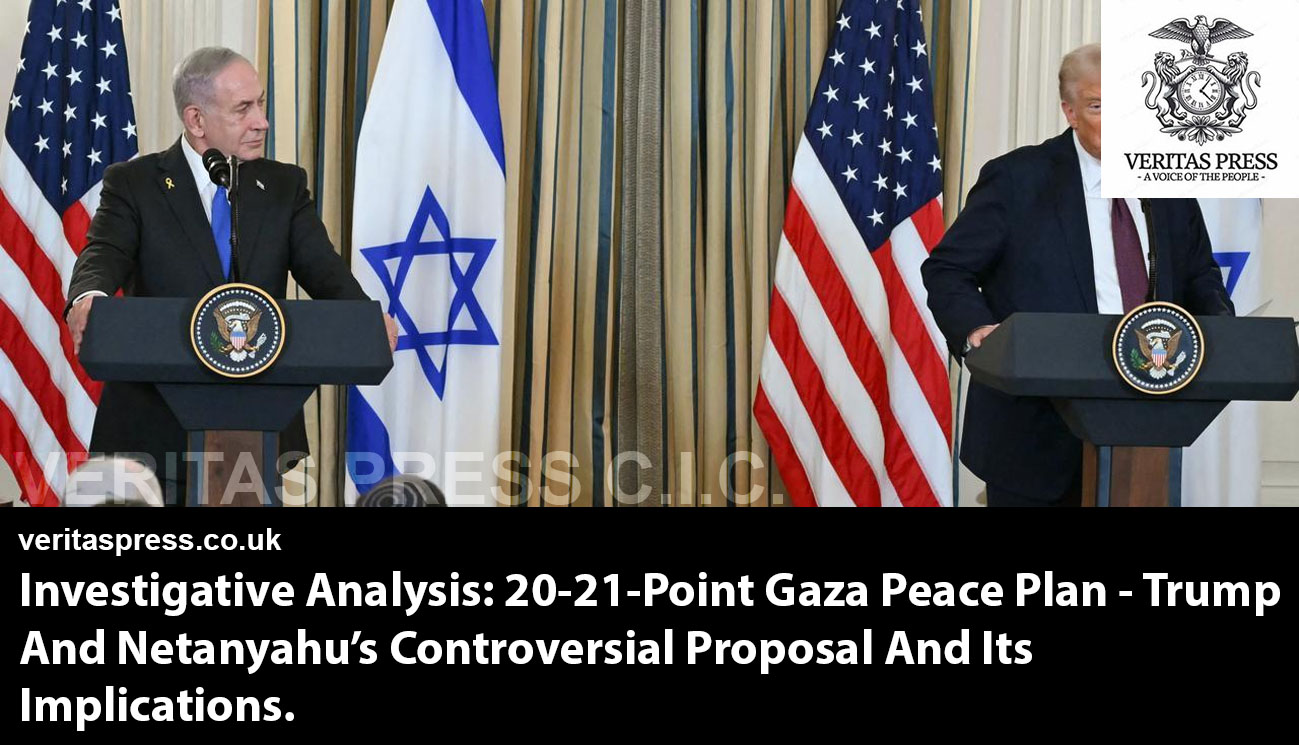Press Release: Veritas Press C.I.C.
Author: Kamran Faqir
Article Date Published: 29 Sept 2025 at 11:42 GMT
Category: Middle East-Mediterranean | Sumud Flotilla
Source(s): Veritas Press C.I.C. | Multi News Agencies
Business Ads
An international humanitarian flotilla is making its final push toward the Gaza Strip in an effort to break Israel’s naval blockade and deliver aid to the besieged enclave, organisers announced on Monday. The mission, which has attracted global attention and controversy, underscores deep tensions over humanitarian access, sovereignty, and the laws of armed conflict.
The Flotilla’s Status And Route:
As of the latest update, the International Committee for Breaking the Siege on Gaza says the flotilla, currently, is approximately 570 km (307.7 nautical miles) from Gaza. Organisers expect to reach the critical waters, where past missions have been intercepted, on Tuesday. The flotilla includes dozens of vessels sailing from the Mediterranean, with additional boats joining from Cyprus and Türkiye.
Italian activist Tony La Piccirella, a spokesperson for the Global Sumud Flotilla, said in a video statement that they plan to reach the same “interception point” where previous aid ships, Madleen and Handala, were last stopped by Israeli naval forces. The Handala vessel, for example, was intercepted on July 26 after travelling about 70 nautical miles from Gaza and escorted to Ashdod. The Madleen was stopped earlier, at about 110 miles out.
La Piccirella emphasised that the mission is growing in scale: “It’s not about us … it’s like a movement with hundreds at sea and millions on land … not stoppable until the siege is broken.” He also indicated that, in addition to naval assets from Italy and Spain providing protection, three additional countries are considering sending military vessels (though he did not name them).
The flotilla’s lead vessels, OHWAYLA and ALL IN, are reportedly now just 678 kilometres from Gaza, with an estimated arrival in 3 to 4 days. The coalition stated its determination is “absolute,” but acknowledged that entering the high-risk zone will mark the moment when “global vigilance and solidarity are needed most.”
Over the weekend, the flotilla navigated north of Egypt’s Marsa Matrouh and was expected to sail close to Alexandria before proceeding toward Gaza waters. The organisers also announced intentions to dispatch a vessel carrying more than 100 journalists and medical professionals to document the mission and provide independent coverage from the Israel-blockaded enclave.
Diplomatic And Military Developments:
European Support and Warnings:
Germany has publicly called on Israel to refrain from attacking the flotilla, warning of a “risk of violent intervention.” Deputy Foreign Ministry spokesman Josef Hinterseher urged both sides to respect international law. Berlin’s warning comes as the flotilla is now estimated to be less than 399 nautical miles from Gaza.
Spain and Italy have taken more concrete steps: both countries have dispatched naval vessels to shadow and assist the flotilla. Italy’s position is somewhat ambivalent, criticising the mission as “dangerous and irresponsible,” while sending frigates for rescue or humanitarian support roles (without authorisation for combat). Spain, meanwhile, has framed its involvement as protecting its citizens and upholding international navigation rights.
Italian Prime Minister Giorgia Meloni condemned drone attacks targeting the flotilla but also advised the mission to reroute aid through Cyprus. Spain’s government, under Prime Minister Pedro Sánchez, announced sending a naval vessel from Cartagena to escort the flotilla, reinforcing its commitment to humanitarian oversight.
Interception Threats and Military Planning:
Israeli officials have signalled intentions to intercept the flotilla before it reaches Gaza’s shores. According to reports, Israel’s naval commando unit Shayetet 13 has recently conducted exercises aimed at seizing ships at sea with “minimal harm to participants.”
Israel’s public broadcaster KAN reported that the state had proposed alternative routes for the aid, offering to transfer it via Ashkelon Port, through southern Cyprus, or via the Vatican. Though the flotilla organisers rejected those offers as undermining their direct challenge to the blockade.
If Israel carries out such an operation, it would mirror prior interventions: intercepting and boarding vessels in international waters, seizing ships and detaining activists.
Israel, in turn, asserts that its naval blockade is legal under its ongoing conflict with Hamas, and that any attempt to breach it will not be tolerated. The Israeli Defence Forces have voiced readiness to prevent entry into what they designate as the “active combat zone.”
Background And Past Precedent:
This is not the first time aid flotillas have attempted to reach Gaza under blockade. Earlier in 2025:
- In June, the Madleen ship carrying Greta Thunberg and other activists was seized in international waters. Israeli forces boarded it and towed it to Ashdod.
- In July, the Handala vessel was intercepted after having breached further than Madleen’s path. The activists were detained, and some went on hunger strike in protest.
- Earlier in May, the Conscience, part of the Freedom Flotilla Coalition, was reportedly targeted by drones in international waters off Malta, though no casualties were reported.
Those prior missions heighten the stakes: the flotilla now faces both physical dangers (drone and naval harassment) and political/legal challenges (Israel’s accusations, claims of sovereignty, and the rules of maritime law).
Humanitarian And Legal Stakes:
The Siege On Gaza.
Since March 2, Israel has fully closed Gaza’s border crossings, barring virtually all corridors for food, medicine, fuel, and other essential supplies, a measure that has intensified famine, disease, and civilian suffering across the enclave. Gaza’s healthcare system is collapsing, with hospitals under siege, lacking necessary supplies, and overwhelmed by casualties amid ongoing airstrikes and bombardment.
Local health authorities in Gaza report tens of thousands of deaths since October 2023, many civilians, including women and children. The conflict has left large swaths of the territory uninhabitable, with widespread displacement, infrastructure destruction, and reports of starvation and disease.
Critics argue that Israel’s refusal to allow sustained humanitarian access amounts to collective punishment, a violation of international humanitarian law. Many international bodies have repeatedly called for corridors of aid, while Israel counters that some aid is diverted by Hamas, and that its security concerns justify tight controls.
Legal Arguments And Risks:
Under international law, especially the Geneva Conventions and the UN Convention on the Law of the Sea, civilians engaged in humanitarian operations enjoy protection, as long as they do not threaten peace or security. The flotilla’s organisers assert that any attack on them would violate those protections and could amount to war crimes.
Some legal scholars argue Israel may have the right to enforce a blockade during armed conflict, but must do so in a manner consistent with proportionality and distinction. Interceptions in international waters remain controversial.
Israel has accused the flotilla of having ties to Hamas and of being a political provocation rather than a purely humanitarian endeavour, claims the organisers vehemently deny.
What Lies Ahead:
As the Global Sumud Flotilla draws closer to Gaza, several key questions loom:
- Will Israel intercept it? With Shayetet 13 drills underway and previous patterns of interception, many observers expect a naval confrontation.
- How will European naval escorts intervene? The Italian and Spanish vessels have limited legal authority; their role is likely confined to rescue and monitoring.
- What will be the international reaction? A violent interception with casualties would provoke widespread condemnation and could escalate diplomatic pressure on Israel.
- Will the flotilla succeed, partially or wholly? Even if delivering at sea is blocked, the campaign might force new humanitarian corridors or pressure Israel politically.
This flotilla thus represents not just a logistical effort to deliver aid, but a symbolic test of international will, maritime law, and the limits of siege warfare in the 21st century.


